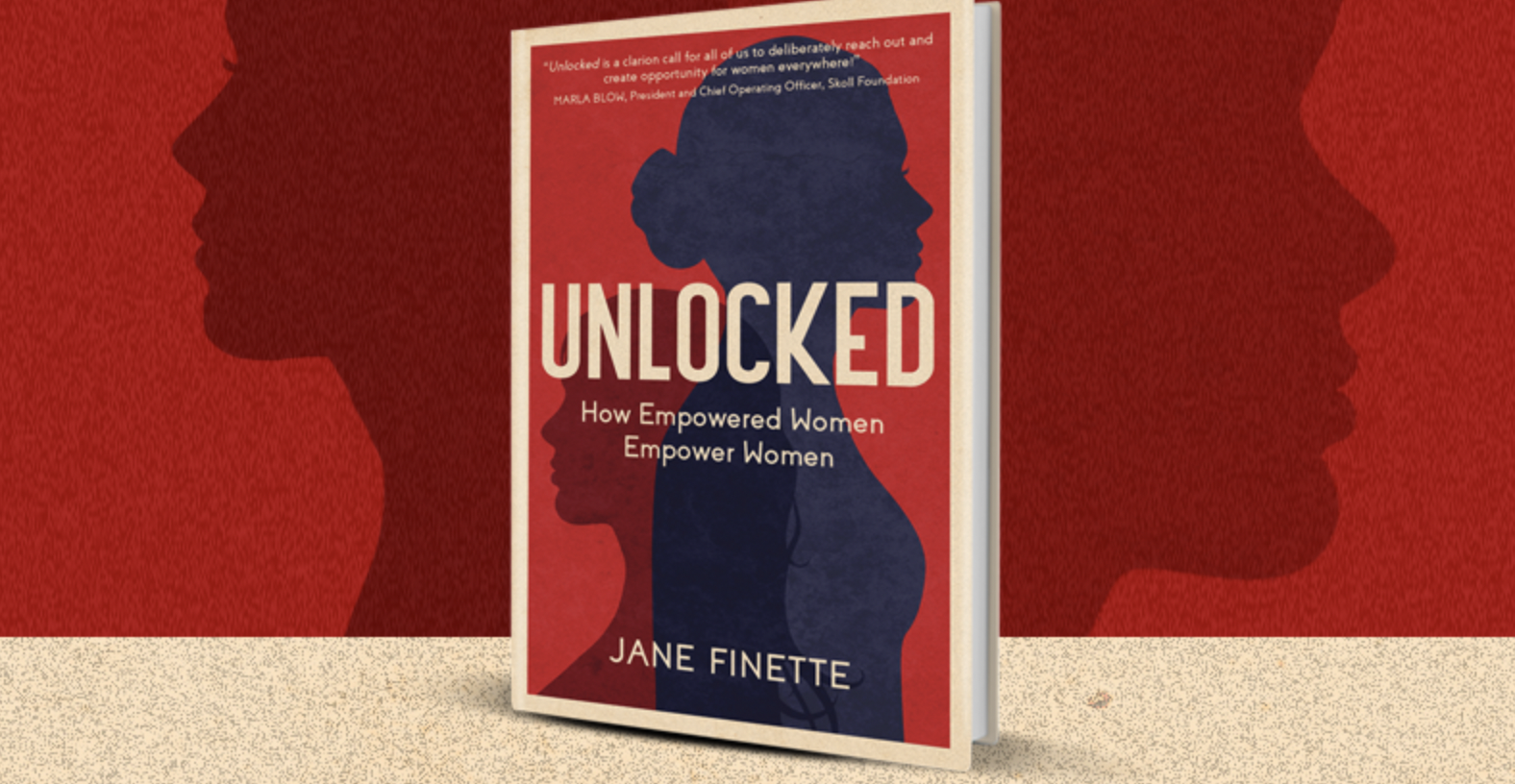When I was a CEO, I knew I needed co-pilots around my executive table. Piloting a business in an environment of increasingly fast-paced turbulence, with such high stakes decision making and so many strategy, execution, and leadership challenges, requires Collective Intelligence in the cockpit. I was running high technology aerospace hardware and software companies, serving […]
Continue reading21 Insights for 2021 – Second Edition

Most of us have been so distracted by the pandemic that we’ve missed the reality that the year is almost half over. Recognizing this, we thought it would be helpful to consider these global trends and give you a chance to incorporate them into your business model as part of the new normal.
1.Fewer onsite workers. A recent Business Journals/Blind survey reports 64% of respondents would forgo a $30,000 (US) bonus to continue working remotely. This will naturally lead to many onsite meetings and conferences being replaced by remote communications and video conferences. Those willing to return will also probably expect more from their work environment, as outlined in The company’s role in a post-pandemic world.
2.Make your brain younger. Brian Pennie, author (and recovered addict) of 12 Age-Reversing Habits, tells us; “Habits are the fabric of our beings. When you change your habits, you change your brain. And when you change your brain, you change your life. Seek questions, not answers, focus on the present moment, use challenges as fuel for growth.”
3.Be more agile. Companies with the right mix of people, processes, and technology were able to respond to rapidly changing consumer behaviors and thrive in the challenging business environment brought on by COVID-19. Translation: Stop trying to predict the future and put the right systems (and people) into place so you can quickly adapt as your business environment changes.
4.Break down the silos. There remain many barriers that prevent marketing, analytics, e-commerce, and other business technology users from being as productive as possible. With operational efficiency, a complex, multi-faceted metric, the key to elevating the efficiency, productivity, and profitability of your teams is simple: SHARE INFORMATION!
5.Be prepared! The return of consumer confidence means a jump in spending. Pent-up demand, or so-called “revenge shopping”, is already hitting every sector, with a particular focus on communal activities (restaurants, entertainment). Smart companies are investing now in people, inventory, and capacity, and reminding consumers of the reasons to buy from them.
6.Different nations. Different fears. With the exception of China, countries with older demographics (France, Italy, Japan) are less optimistic about growth in the coming year than are those with younger populations (India, Indonesia). China, after being the first country hit by the COVID-19 pandemic, has largely returned economically to pre-crisis times, with 81% of consumers having resumed out-of-home activities (versus 18% in Mexico). This suggests as individual countries get COVID under control, spending on goods and services will rise significantly in those markets.
7.Travelers ahoy? Both leisure and business travel have seen extensive challenges over the past 15 months, individually and as an industry. Consider the following:
- In China, leisure travel was largely back to normal growth by mid-summer 2020. Domestic travel was up significantly, though international travel was still depressed due to border restrictions and health/safety concerns.
- With so much pent-up demand in the discretionary travel market, similar surges are already underway in the US, and you can safely assume similar trends will roll out in other markets as they approach some level of herd immunity.
- Business travel easily represents 20%+ of spending in the hospitality and travel sectors and can be responsible for up to 70% of revenues for high-end hotels. Yet with the rise of remote meetings via ZOOM and similar technology, the question naturally arises; is it necessary?
- Business travel historically takes longer than leisure travel to bounce back after a recession. Look for regional and domestic business travel to rebound 2-3 years faster than international business travel.
- Factors playing into a possible (but unlikely) return to pre-pandemic levels will include those resuming in-person sales/customer meetings as soon as they safely can and peer pressure (i.e. jumping back into the market when you see your competitors out there.)
8.Adjust your attitude. Author Aaron Nichols offers 3 lessons from a dying man, including this: “Happiness is not a consumable product. It is not something you find by searching for it. It is a naturally arising by-product of a fulfilling, well-lived life. A well-lived life has more to do with perspective than anything else.”
9.Increased entrepreneurialism. COVID seems to have reminded everyone that necessity is the mother of invention. In the third quarter of 2020 alone, the number of new business applications in the United States (many of them solopreneurs) doubled over the same period in 2019, though 20% are likely to leave self-employment when things improve. Other major economies (France up 20%, Britain up 30%) are showing similar YOY trends. B2B services have been increasing to service those new ventures.
10.Fewer businesses devastated. The COVID-19 crisis has devastated small businesses. There were 25.3% fewer small businesses in the US in December 2020 than at the beginning of the year. US small-business revenue fell 30%+ over the course of 2020. However, the positive trend in entrepreneurship should bode well for long-term job growth and economic activity.
11.Digitally enabled productivity increases. Businesses are moving 20-25x faster building supply-chain redundancies, improving data security, and increasing the use of advanced technologies in operations. Retailers are improving digital and omnichannel business models, while healthcare providers are establishing virtual options as the norm. Insurance firms are personalizing the customer experience, and semiconductor manufacturers are identifying and investing in next-generation products. US productivity in the second and third quarters of 2020 was the largest six-month improvement since 1965 (though they were starting from the lowest point since 1947). Combined, look for this to create new opportunities in M&A and an urgent need to invest in capability building.
12.Shopping behavior changes forever. In nine of 13 major countries surveyed by McKinsey, at least two-thirds of consumers say they have tried new kinds of shopping since the pandemic began. 65% (in all 13 countries) intend to continue doing so. This suggests brands just doing things the same way they’ve always done them WILL get left behind. Look for digital shopping to increase in developing markets like Brazil and India; to continue at a high level in Britain and the US, and to continue (though less enthusiastically) in continental Europe.
13.You can win customers. In a recent McKinsey survey, only 60% of consumer-goods companies say they are even moderately prepared to capture e-commerce-growth opportunities, and brand loyalty is lacking among consumers. With significant numbers of consumers moving online, companies with solid marketing and sales strategies will be able to take that business away from their competitors.
14.Covering your backside. The pandemic revealed vulnerabilities in the long, complicated supply chains of many companies, and many businesses have set about to fix that. Shutdowns have become predictable, happening to most firms once every 3.7 years. Cost differences between developing and developed countries are shrinking due to factors like the application of data, analytics, human/machine interaction, robotics, and 3D printing. Add in factors like transportation, regulations, quality control, and political stability and it becomes increasingly understandable why many businesses are relocating their sourcing to domestic markets. True, there are good reasons to take advantage of regional expertise and to be present in place to serve fast-growing consumer markets. But questions on security and resiliency remain, and you should look for as much as a quarter of global goods exports ($4.5 trillion US) to shift by 2025.
15.Telehealth is Growing. COVID forced us all to consider telehealth, taking it from a concept to reality, virtually overnight. For example, Japan went from under 1,000 institutions offering remote care in 2018 to over 16,000 providing that service by mid-2020. Predictions are that telehealth could account for 30% of all healthcare visits in the future.
16.Remote Workers Remain. In case you didn’t get the memo, remote working is now a permanent factor in work environments. Millions were thrown into it overnight, and almost two out of three have expressed interest in continuing to work away from a formal office setting. Adding fuel to this particular fire is an estimate from the McKinsey Global Institute (MGI) that over 20% of the global workforce (most of them in high-skilled jobs in sectors such as finance, insurance, and IT) could work the majority of its time away from the office and be JUST as effective. This is seen as a once-in-several-generations change and is a direct result of combining COVID-19, automation, and digitization.
17.What of the office? With all those employees working from home, there’s a natural shift from the office’s role as the traditional center for company culture and community. Companies of all sizes need to be making decisions on the need for office space, telecommunications, travel, training, professional development, software, supplies, and networking, as well as determining how security, automation, digitization, and other technologies fit into their mix. Look for every industry to be impacted, including retail (impacted by automating checkout), transportation (lower fuel sales), restaurants, and work-related clothing.
18.Workforce Innovation. It’s a truism that it’s cheaper to train current staff than to find new people. Investing in employees also makes them more loyal, raises customer satisfaction, and improves brand perception. Almost 90% percent of executives and managers surveyed say their staff faces skill gaps within the next five years. Just 1/3 are prepared to deal with the issue. To get ahead of this situation, make a commitment to learning for everyone in the company. Determine what skills your company needs (now and in the future), provide training to put those skills into place, and analyze what does (and doesn’t) work.
19.Environmental Priorities. Many countries are using their COVID recovery plans to implement new environmental policies, including:
- The EU is issuing at least $240 billion (US) in “green bonds.”
- China has pledged to reduce its net carbon emissions to zero by 2060.
- Japan expects to be carbon neutral by 2050.
- South Korea is investing in green infrastructure & technology to have net-zero emissions by 2050.
- The US is currently negotiating its way to investing $2 trillion in clean energy-related to transportation, power, and building.
- Canada is linking recovery to climate goals.
- Nigeria is looking to phase out fossil-fuel subsidies, installing solar-power systems for 25 million people.
- Colombia is planting 180 million trees.
These changes will impact both your investors and your ways of doing business. By making investments that are climate-resilient (or diversifying your supply chains), your business may be able to mitigate its climate risks.
20.You have more stakeholders. Business as usual is quickly becoming a thing of the past, with consumers, businesses, and society at large all recognizing that business is a vehicle that should be doing more than just making money. Businesses are now expected to be giving back to their communities and to be good corporate citizens. Known as stakeholder capitalism, the idea that businesses should seek to serve the interests of consumers, suppliers, workers, society AND as shareholders isn’t new, but it is gaining increasing currency. As an example, the number of certified B Corporations (legally required to consider the interests of all stakeholders in their decision making) have gone up from 0 in 2006 to 3,500+ today. All are dedicated to a global economy using business as a force for good.
21.Be more flexible. Even as the world is starting to open up, time management coach Elizabeth Grace Saunders reminds us of the importance of thinking differently if you’re still stuck at home, or ever find yourself in that position again. Says she; “We can use everything that’s happening to us right now as an opportunity to become more resilient. Feel your anger, accept what you aren’t changing, develop a strategy for moving forward, and invest in self-care.“
Moving Forward
Confucius said, “May you live in interesting times,” and we certainly check that box thanks to COVID. There are other trends you’ll want to know about that specifically apply to your business and your industry, but we see this as a good place to start.
One possible takeaway from these thoughts might best be summed up by the folks at Rotary International, who speak of “Service Above Self.” As you’re pursuing profit, look to also build trust and social capital with customers, team members, and your local community. This will ensure you have the moral credibility needed to create long-term value for everyone associated with the business and improves chances others will want to continue doing business with you on every level.




















